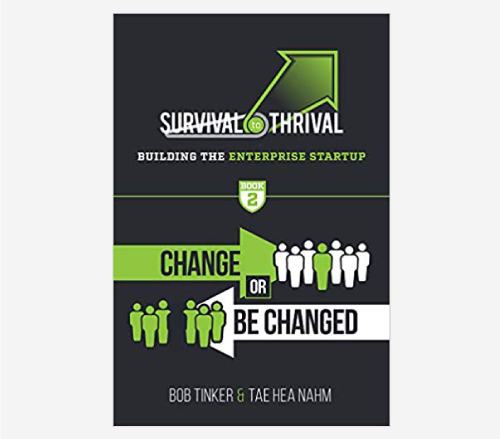
The missing link to unlock growth is 'Go To Market Fit'
As a three-time entrepreneur, I’ve been on the difficult journey of scaling from founder to big-company CEO. In one of my ventures I went from an idea on a whiteboard to a publicly trading entity in eight years, and it isn’t just one big celebration – it is hard to keep up with your company.
My experience of growing a company and then dealing with its growth made me fascinated in the question ‘what would I tell my myself 15 years ago as a newbie entrepreneur?’. One of my investors, Tae Hea Nahm, the co-founder of Storm Ventures was similarly fascinated in the question ‘why do some startups make it, and others fail.’ He had worked with almost 200 startups and was fascinated in the patterns that make some companies work. There has to be more to it than right market, right team, and right product.
So we decided to put our respective experiences of entrepreneur and investor together and write a book series called Survival to Thrival.
In our first book, we identified the pattern across companies that successfully made the leap and unlocked growth’
We called it ‘Go-to-Market Fit'. Companies who had achieved it found urgency, nailed their GTM model, and built a repeatable go-to-market playbook to find and win customers over and over again. They were able to transcend from founder-led hero selling to predictable, repeatable, and scaleable growth. The company (and investors) can now run a model: invest more capital in sales, marketing, product - and generate predictable growth! Sounds perfect, right? But maybe not.
Once growth unlocks, all hell breaks loose for the team. It's really hard. Our second book, Survival to Thrival: Change or be Changed is about difficult changes that the startup's people go through as their companies grow.

In the beginning, it is simply Survival - how not to die? With luck and hard work, it becomes about Thrival - how do we win?

A novel to help UK business owners adopt a more creative mindset and survive their first five years of business in a post-Brexit economy.

Better creative thinking leads to brilliant decision making and successful, innovative solutions to business problems. Using the proven practical skills, techniques and advice in this book, you will learn how to think better, faster and more productively, enabling you to shape, train and inspire your thinking to deliver more effective results.

Start-Ups, Pivots and Pop-Ups is a must read for anyone with a business idea and the desire to be successful. It gives the reader the skills and knowledge to survive in today's innovation and entrepreneurial-focused world. This book is about starting a business. It's about putting your toe in the entrepreneurial water - perhaps through doing a short term business gig or a pop-up business- and then seeing what happens. It shows you how to listen to the customer and work out why failures may happen, and when they do, you'll learn how to deal with them and create a new business that is robust and ready to grow.
As the startup begins to accelerate, the company changes. And therefore everyone's job changes, right underneath them. It applies to everyone from the CEO to the leaders, even to the board. What used to work, suddenly stops working. It's maddening and frustrating for them - and totally normal. So how does the team adapt?
As the startup grows, everyone's job changes. And they therefore must change themselves to succeed - or be changed. Yet, there is little institutional knowledge passed down to help startup leaders adapt.
What makes this change so hard? The key is counter-intuitive. We've called it 'Unlearning'. This means that the very behaviours and skills that were critical to a leader's success at one stage now become liabilities and hold the leader back. This process of change is extremely awkward and fosters insecurity for everyone including the CEO, who often finds it the hardest.
Product-centric Founding CEOs can be magic for early stage companies. But then, those CEOs must become the CEO of the whole company, painting a vision and an execution plan for not just the product, but go-to-market, customers, finance, and the team.
The CEO must become comfortable with the candid criticism that comes from hiring Grade-A leaders. A classic example would be when the CEO hires the first "Grade-A" role such as a VP of Sales. Adding this is critical to company growth, but it can make a CEO and others uncomfortable. The VP will push everyone in the company - the CEO, the product team, the marketing team - to the next level.They may point out that early customer-acquisition processes that were the pride of the company were actually a one-off, unrepeatable sale, and will demand that the company develop a repeatable sales model (a playbook).
The CEO becoming comfortable with a Grade-A leader is a key component to 'unlearning'. Failing to unlearn often dooms a leader who starts with a lot of potential, to failure. But it's not all doom and gloom. Unlearning is an invigorating and transformational personal and professional experience for everyone - even if painful and turbulent in the moment.
The good news is, the discomfort that comes with growth and unlearning is normal. Embrace the discomfort. It's a sign you're on the right path. Successfully accelerating a tiny startup in to become a category leader is crazy difficult, but a profoundly satisfying experience that creates enormous value'.

